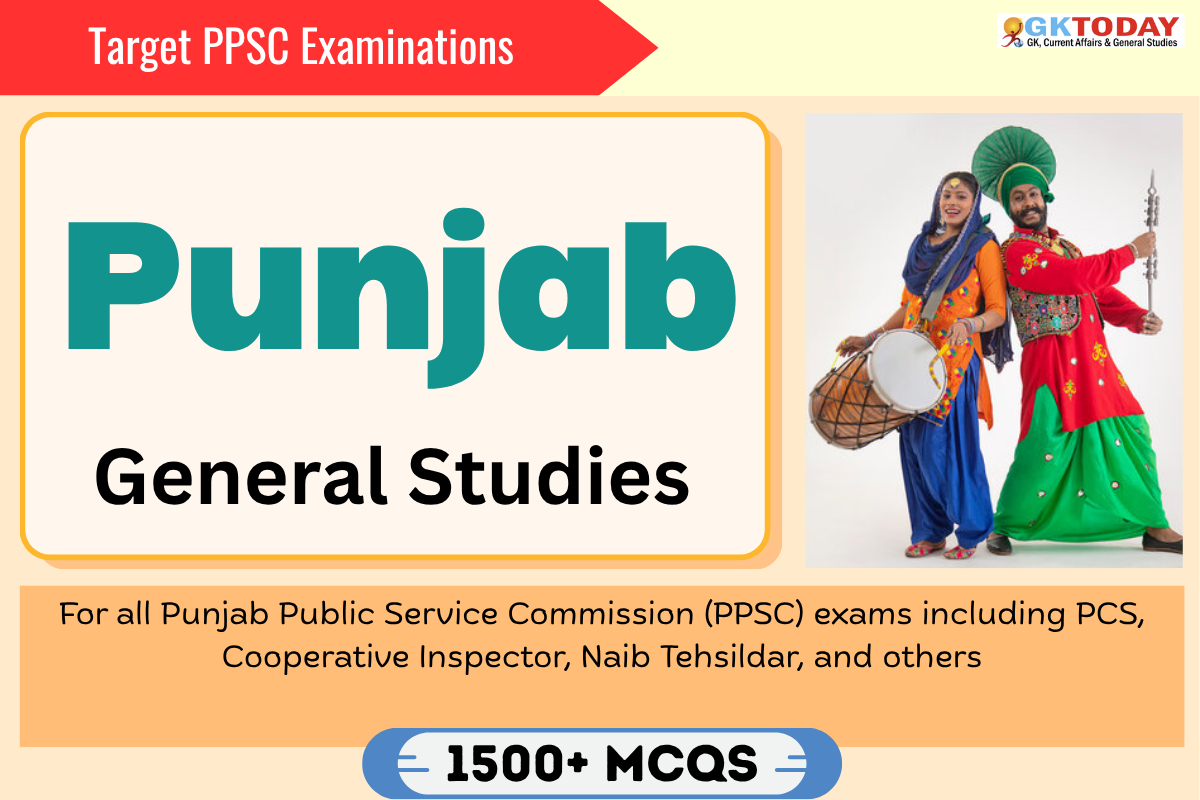States PCS: Punjab GK Questions for PPSC Examinations
For all Punjab Public Service Commission (PPSC) exams including PCS, Cooperative Inspector, Naib Tehsildar, and others.
1. Which city served as the main center for the Ghadar Party’s revolutionary activities in Punjab?
[A] Ludhiana
[B] Amritsar
[C] Jalandhar
[D] Patiala
Show Answer
Correct Answer: A [Ludhiana]
Notes:
Ludhiana was the primary hub for the Ghadar Party’s revolutionary work in Punjab during the early 20th century.
2. Who was one of the key leaders of the Harsha Chhina Mogha Morcha agrarian revolt in Punjab?
[A] Sohan Singh Josh
[B] Lala Lajpat Rai
[C] Achhar Singh Chhina
[D] Bhagat Singh
Show Answer
Correct Answer: C [Achhar Singh Chhina]
Notes:
Harsha Chhina Mogha Morcha (1946) was an agrarian struggle in Punjab against British irrigation policies. Led by Achhar Singh Chhina and Sohan Singh Josh, about 950 protestors were jailed. The movement succeeded in restoring canal water supplies. Participants are recognized as freedom fighters by the Indian government.
3. Who revolutionized Punjabi journalism by editing Urdu Daily Ajit and Punjabi Ajit?
[A] Amrita Pritam
[B] Sadhu Singh Hamdard
[C] Bhagat Singh
[D] Surjit Patar
Show Answer
Correct Answer: B [Sadhu Singh Hamdard]
Notes:
Sadhu Singh Hamdard edited Urdu Ajit (1944-1957) and Punjabi Ajit (from 1955), transforming Punjabi journalism. He was awarded Padma Shri, pioneered the Punjabi Ghazal, and contributed significantly as a poet, academic, and activist, deeply impacting Punjab’s literary and journalistic landscape.
4. Which Ballabhgarh ruler led a revolt against the British in 1857?
[A] Raja Surajmal
[B] Raja Nahar Singh
[C] Raja Man Singh
[D] Raja Pratap Singh
Show Answer
Correct Answer: B [Raja Nahar Singh]
Notes:
Raja Nahar Singh of Ballabhgarh (now Haryana) led the 1857 revolt against British rule. He joined Bahadur Shah Zafar, captured key locations, and was executed in 1858. His estate was confiscated and Ballabhgarh state abolished. His sacrifice is commemorated in Haryana.
5. Which Sikh leader is linked with the slogan Deg Tegh Fateh?
[A] Baba Deep Singh
[B] Guru Gobind Singh
[C] Ranjit Singh
[D] Banda Singh Bahadur
Show Answer
Correct Answer: D [Banda Singh Bahadur]
Notes:
Deg Tegh Fateh, meaning victory to charity and arms, was notably used by Banda Singh Bahadur. The slogan symbolizes the Khalsa’s twin duties—charity (Deg) and defense (Tegh). It was later adopted by other Sikh leaders and as a state anthem in Patiala until 1948.
6. Who won the Sahitya Akademi Award in 1993 for ‘Hanere Vich Sulghdi Varnmala’?
[A] Amrita Pritam
[B] Shiv Kumar Batalvi
[C] Prof. Puran Singh
[D] Surjit Patar
Show Answer
Correct Answer: D [Surjit Patar]
Notes:
Surjit Patar, noted Punjabi poet from Jalandhar, won the Sahitya Akademi Award in 1993 for ‘Hanere Vich Sulghdi Varnmala’. He was also awarded Padma Shri in 2012 and translated works of Lorca, Brecht and others. Served as President, Punjab Arts Council.
7. Who authored the Apabhramsa poem Akhara Bāḍhā Sa’ala Jagu?
[A] Banabhatta
[B] Kalidasa
[C] Amir Khusrau
[D] Saraha
Show Answer
Correct Answer: D [Saraha]
Notes:
Akhara Bāḍhā Sa’ala Jagu is an Apabhramsa poem by Saraha (~8th century CE), an early Buddhist Mahasiddha. The poem is notable for its philosophical teachings and linguistic features linking to early Punjabi. Saraha is revered as a key figure in Vajrayana Buddhism and spiritual poetry.
8. Which Sikh festival marks the creation of the Khalsa?
[A] Maghi
[B] Hola Mohalla
[C] Vaisakhi
[D] Bandi Chhor Divas
Show Answer
Correct Answer: C [Vaisakhi]
Notes:
Vaisakhi, celebrated on April 13 or 14, commemorates the formation of the Khalsa by Guru Gobind Singh in 1699. It is one of the most important festivals for Sikhs and also marks the Punjabi New Year and the harvest season.
9. Who led Operation Blue Star in 1984?
[A] Lieutenant General Harbaksh Singh
[B] Lieutenant General A.S. Vaidya
[C] Major General R.S. Pannu
[D] Major General Kuldip Singh Brar
Show Answer
Correct Answer: D [Major General Kuldip Singh Brar]
Notes:
Major General Kuldip Singh Brar led 1984’s Operation Blue Star at Golden Temple, Amritsar. The mission targeted armed militants, notably led by Jarnail Singh Bhindranwale. Brar won the Vir Chakra in 1971 and later became Lieutenant General, commanding Eastern Command. The operation remains a major event in Indian military history.
10. Who was the first spiritual master of Radha Soami Satsang Beas?
[A] Shiv Dayal Singh
[B] Jaimal Singh
[C] Sawan Singh
[D] Param Sant Kirpal Singh
Show Answer
Correct Answer: B [Jaimal Singh]
Notes:
Jaimal Singh (1839-1903), from Punjab, was the founder and first spiritual head of Radha Soami Satsang Beas. He was initiated by Shiv Dayal Singh and later built the Beas Dera, emphasizing spiritual practice through Surat Shabd Yoga. Sawan Singh succeeded him after his death in 1903.

